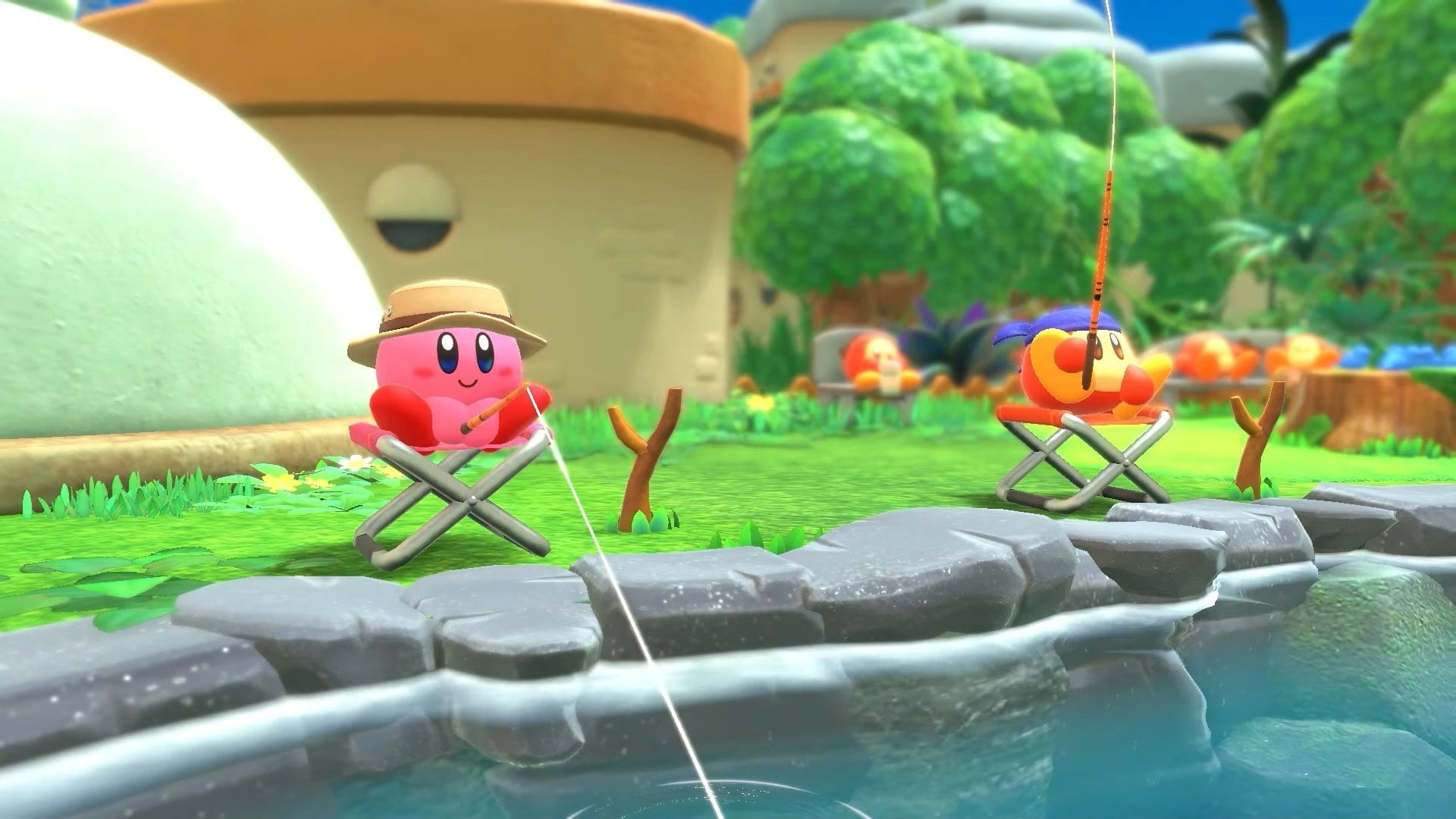It’s been 9 months since the release of Kirby and the Forgotten Land on Nintendo Switch. I really enjoyed the game, and thought it was a great first 3D Kirby adventure. I’ve played through the main game a couple of times now, and after rereading my original review back in March, I’ve realized a lot of my views on the game have changed; for the better or the worse. So here’s my new review of Kirby and the Forgotten Land after 9 months and much more time put into the game.
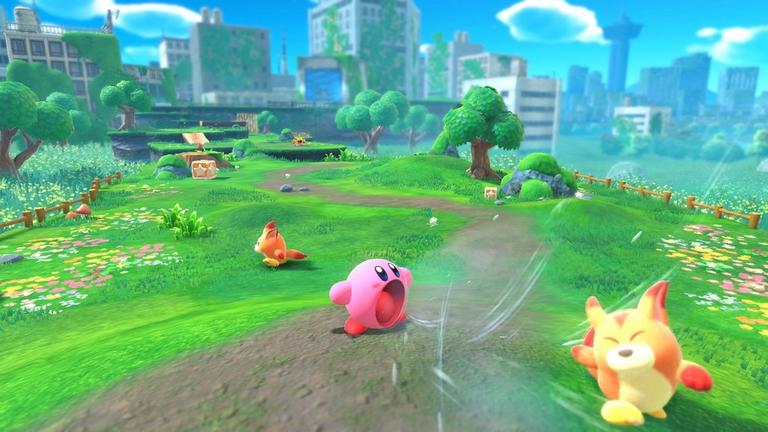
So, Kirby and the Forgotten Land is the first true 3D Kirby game. Kirby will explore 7 worlds each with a unique theme to save the captured Waddle Dees. The game is structured like a standard Kirby game, with the more linear gameplay of level to level in each world instead of a sandbox-style 3D platformer. Now, Kirby and the Forgotten Land is a unique entry in the pink puffball’s series. Instead of running around fun, vibrant worlds in Planet Popstar, Kirby will explore a dystopia; a post-apocalyptic world where all of the buildings and landscapes have started to rot and be taken over by naturistic elements. The best examples of this are Alivel Mall and Wondaria, where branches and branches of leaves and dirt are wrapped around the sides of walls, ground, and even roller coaster tracks. Despite this, the land is still fun and feels like a Kirby game. Speaking of feel, Kirby feels great to move around in 3D. His controls are precise and fluent and they work great. Also, the controls are more on the simple side and not as intuitive as something like a Mario game, but in Kirby and the Forgotten Land, the point is to explore the levels in-depth and the game will reward in many ways by doing so.

The levels in Kirby and the Forgotten Land each have five challenges, which reward you with a Waddle Dee for completing them. Two of these challenges are always the same, being to beat the level and find hidden Dees around the area. But the other challenges are a bit different, as each level has 3 challenges that are always unique. The challenges can range from finding a secret passageway, blooming a set number of tulips, destroying wanted posters, or greeting sea birds on the water. These three challenges are also not shown right off the bat. After clearing a level, one challenge will be revealed, and by discovering the objective before it is shown will also reveal it. I appreciate this, since it lets you enjoy the level simplistically first before heading back in to explore the landscape more.
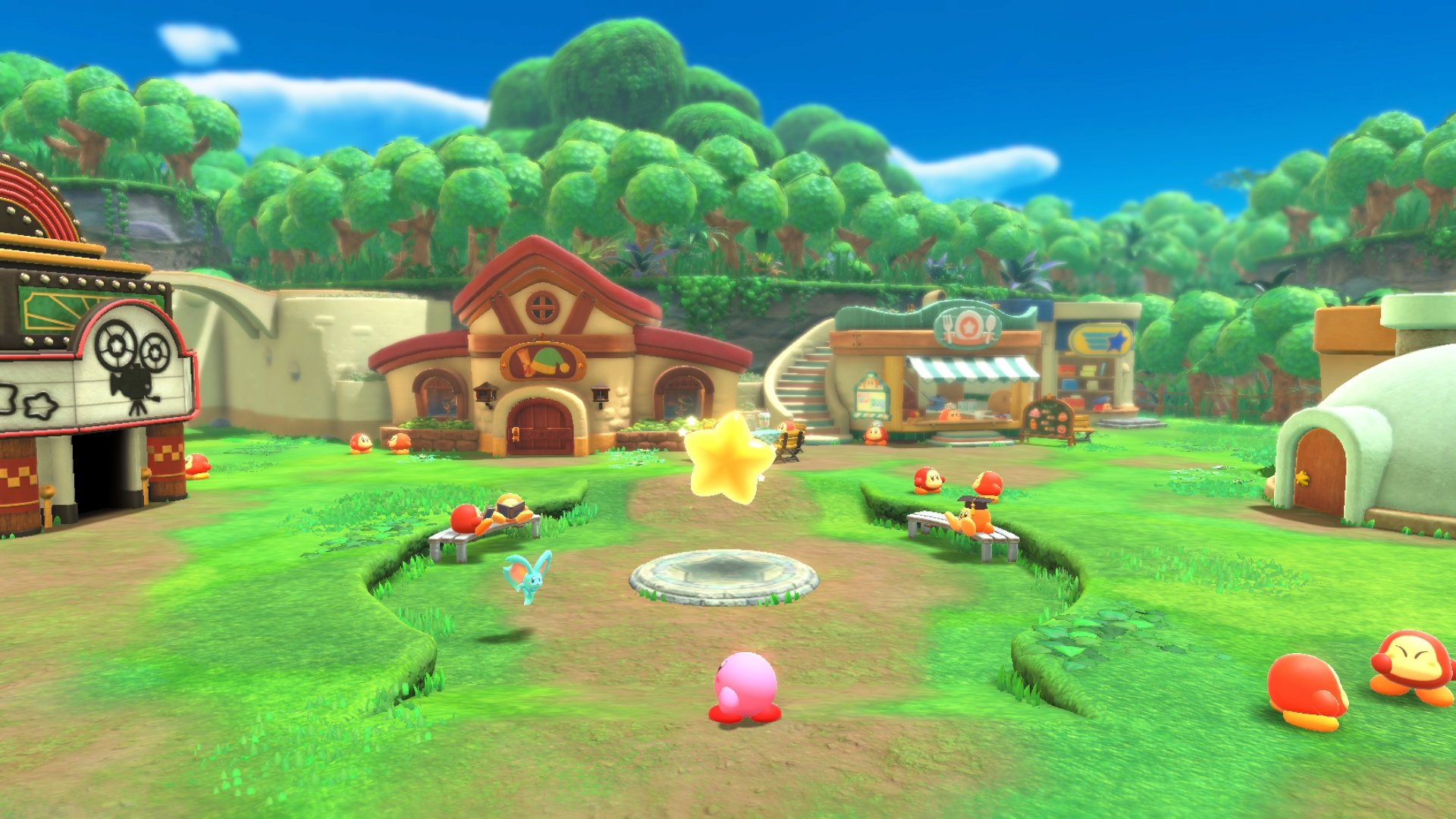
Kirby and the Forgotten Land even has a hub area, called Waddle Dee Town. As you find more Waddle Dees around the game, they’ll work together to rebuild a small town that you can go to at any time. There’s some neat stuff to find here, such as the theater where you can watch cutscenes, Kirby’s House to look at pictures of past Kirby games or regain health by napping in bed, and the Colosseum where you’ll fight previous bosses in the game like in past Kirby games. This is where you’ll also find the subgames, which there are a couple. One of them is called Waddle Dee Cafe: Help Wanted, where Kirby will work as fast as possible to get the food the Waddle Dee customers ask for without making them wait long. It reminded me of that classic mobile game Hello Kitty Cafe, remember that one? Anyway, another subgame is Kirby Fishing, where Kirby will fish in a nearby pond for fish that will give him coins. It’s fun, engaging, and will make you want to get that huge 10,000-gram fish. Woah! The other subgame is Tilt-And-Roll Kirby, where you’ll use motion controls to roll a small Kirby ball around a maze while being cautious of enemies and pits. Now there’s one more Waddle Dee Town amenity that I have talked about: The Waddle Dee’s Weapon Shop. Here’s the Kirby classic: Copy Abilities.

Kirby and the Forgotten Land has 12 copy abilities, which isn’t that much, but they are all fun. The classics are here, like Sword, Cutter, Ice, and Fire, along with 2 new abilities being Drill and Ranger, with both being fun in their own way. In Waddle Dee Town, you have free access to use any copy ability on display, which includes every Copy Ability you’ve collected throughout the game. But not only that, but here is where you’ll evolve your Copy Abilities, a new concept in Kirby and the Forgotten Land. To do this you’ll need to find specific blueprints hidden around the main levels, as well as Rare Stones in the bonus areas which are designed around a certain ability. Evolving Copy Abilities improves its power and stability, and some abilities at the maximum evolution are ridiculously powerful. Now I really like this concept, but I also don’t because once you evolve the ability, there’s no going back; and I found it to be a bit less fun when I went back to find all the Waddle Dees I missed with really overpowered abilities. It was way too easy and it made for a stale replay for me. It’s still cool, though.
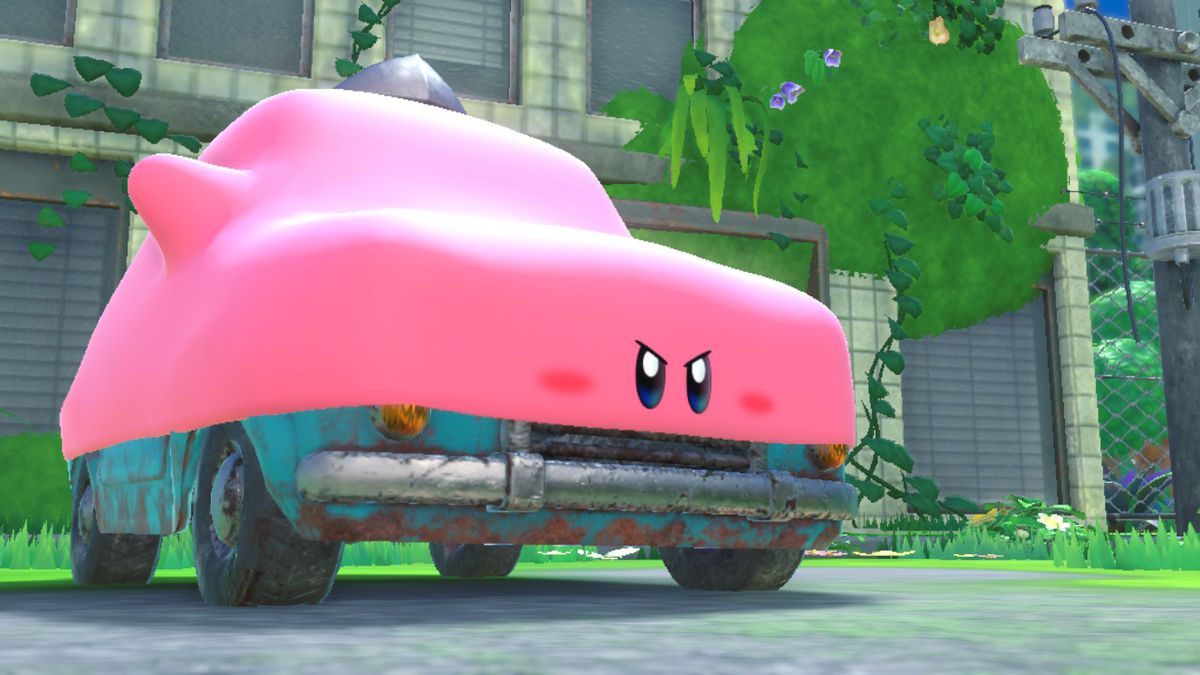
Now, there might be just 12 Copy Abilities, but they aren’t alone because Kirby and the Forgotten Land introduces a new mechanic to the gameplay: Mouthful Mode. You see, Kirby can inhale specific objects to use them in a unique way. The car lets you drive fast and break through walls; the stairs is the key to attacking by tilting them and moving the staircase to climb up it; the cone helps with breaking through the ground or a water pipe to make a rising stream. There are a bunch of Mouthful Modes that are all really fun to play with. Heck, I even made a ranking of each one. Mouthful Mode is a fun inclusion that spices up the gameplay in Kirby and the Forgotten Land, although there is one downside: you can only use each Mode for a limited time since you’ll eventually need to abandon the ability since they’re only used in specific circumstances. They feel more like ways to figure out puzzles than unique Copy Abilities.

Okay, we’re almost done with this review, but there’s a couple of other things I want to address, including some of my gripes with the game. First, the worlds. They are all very imaginative, fun, and unique. There’s an abandoned grassland, a rotting beach, a nature-taken theme park, an urban snowscape, a deserted desert, and a lava world. Each area you explore is fun and unique, and everything looks beautiful. The game remains at mostly thirty frames per second throughout the game, although I did notice some enemies in the background moving at a very choppy frame rate at like 5-FPS at times. And finally, the boss fights. You’ll go from a crazy gorilla to a circus-act lioness to King Dedede himself. The boss fights are epic, engaging, intense, and can be difficult if you make the wrong move.
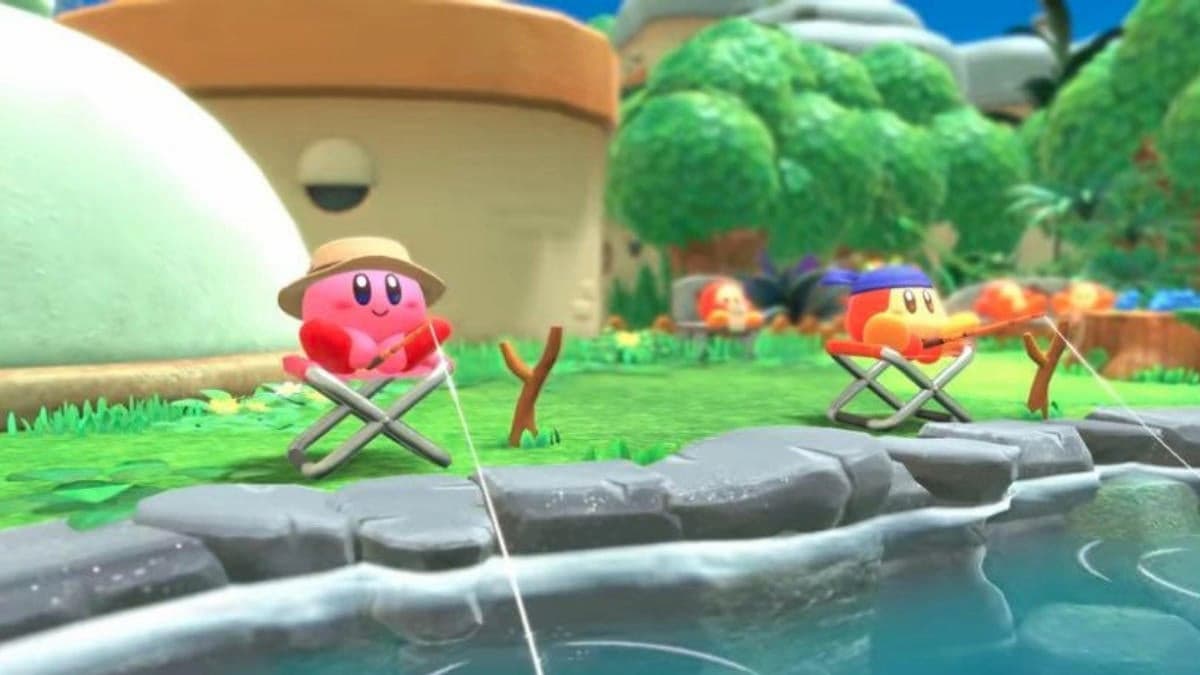
Kirby and the Forgotten Land is a delight throughout, and one of my favorite games Nintendo had to offer in 2022. So, what did you think of our Rewind Review? Let me know in the comments.

